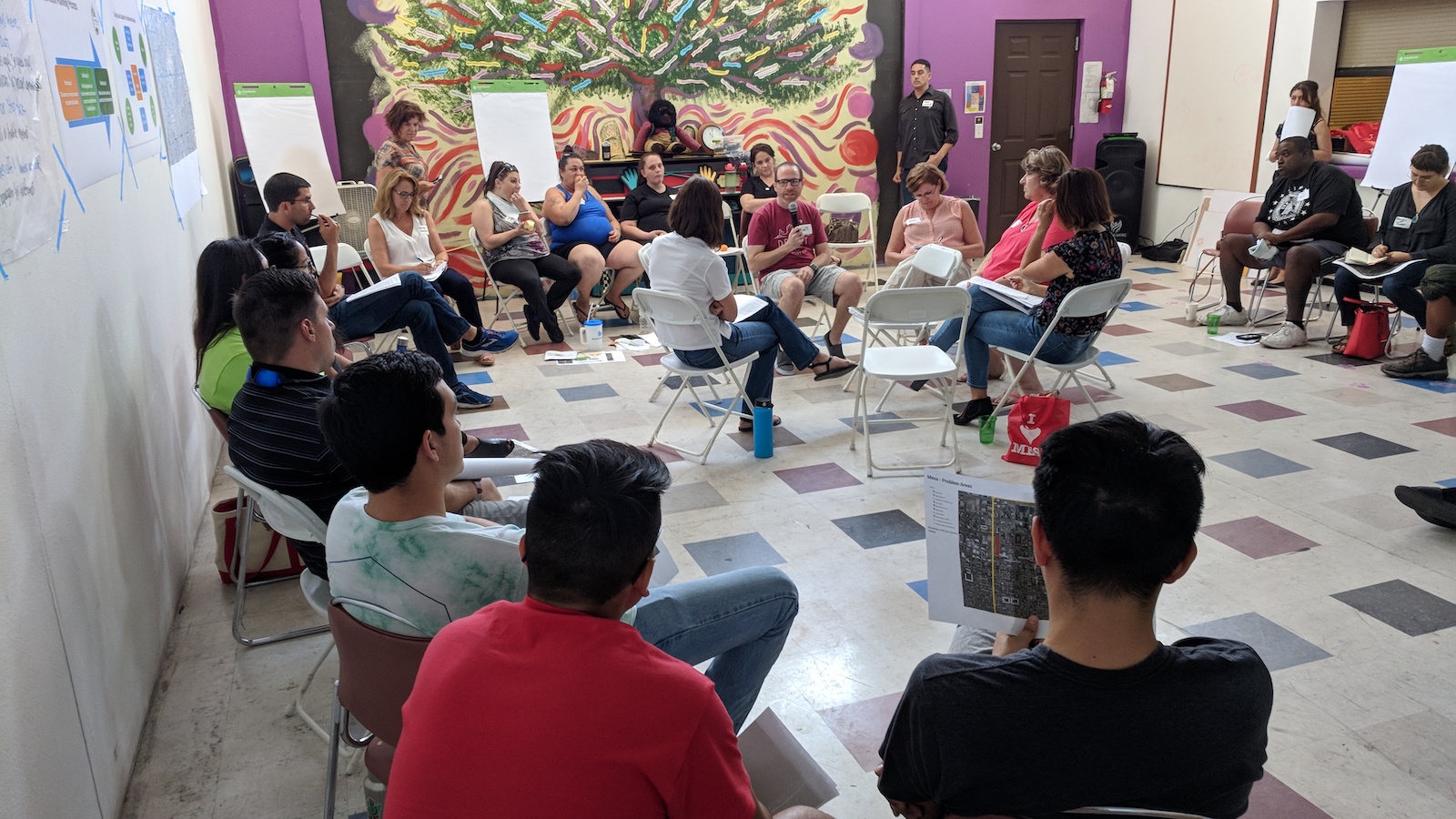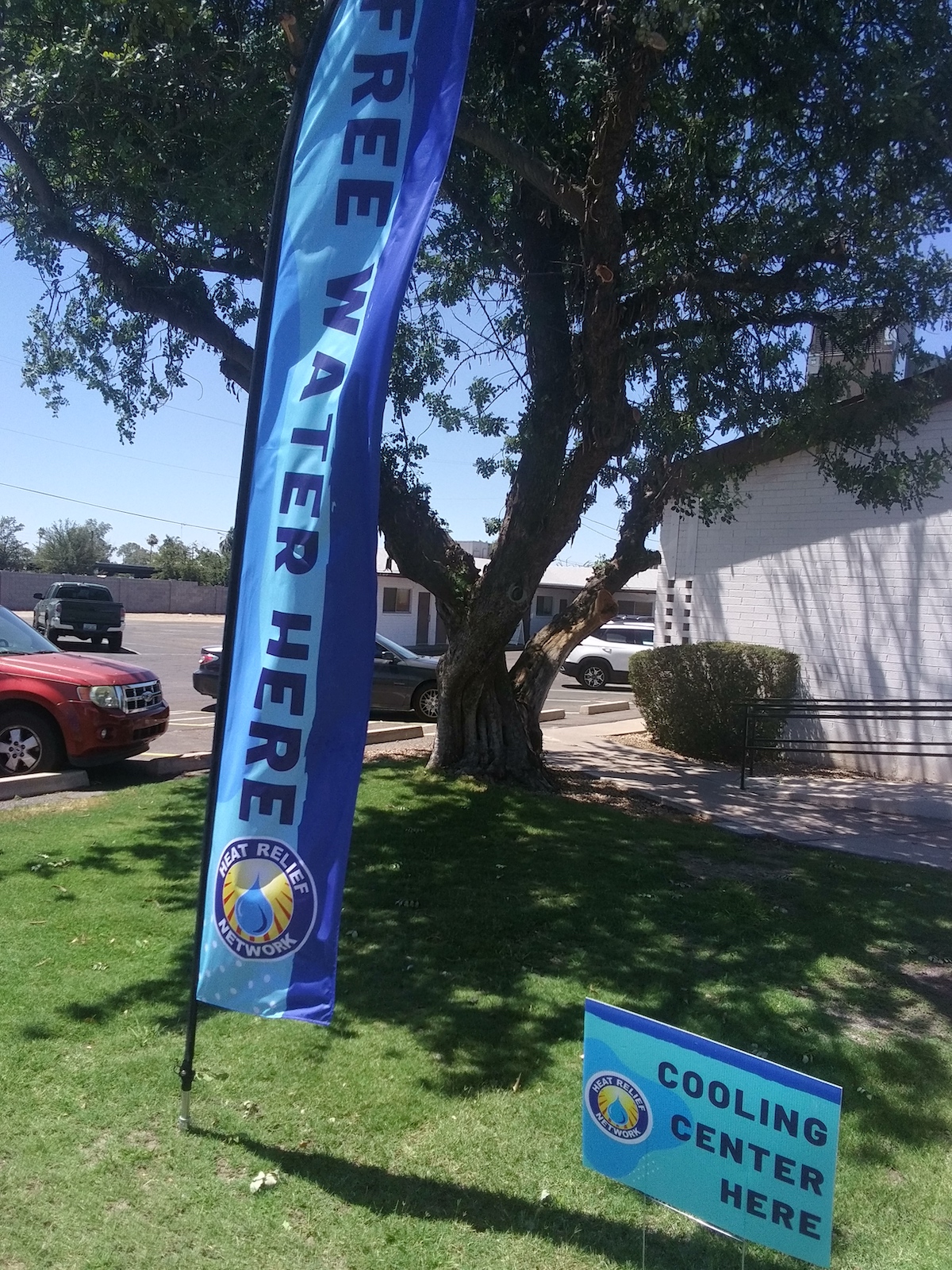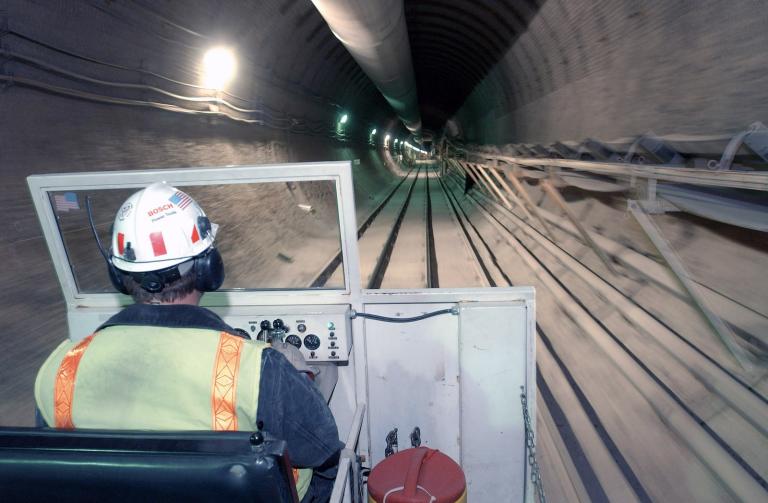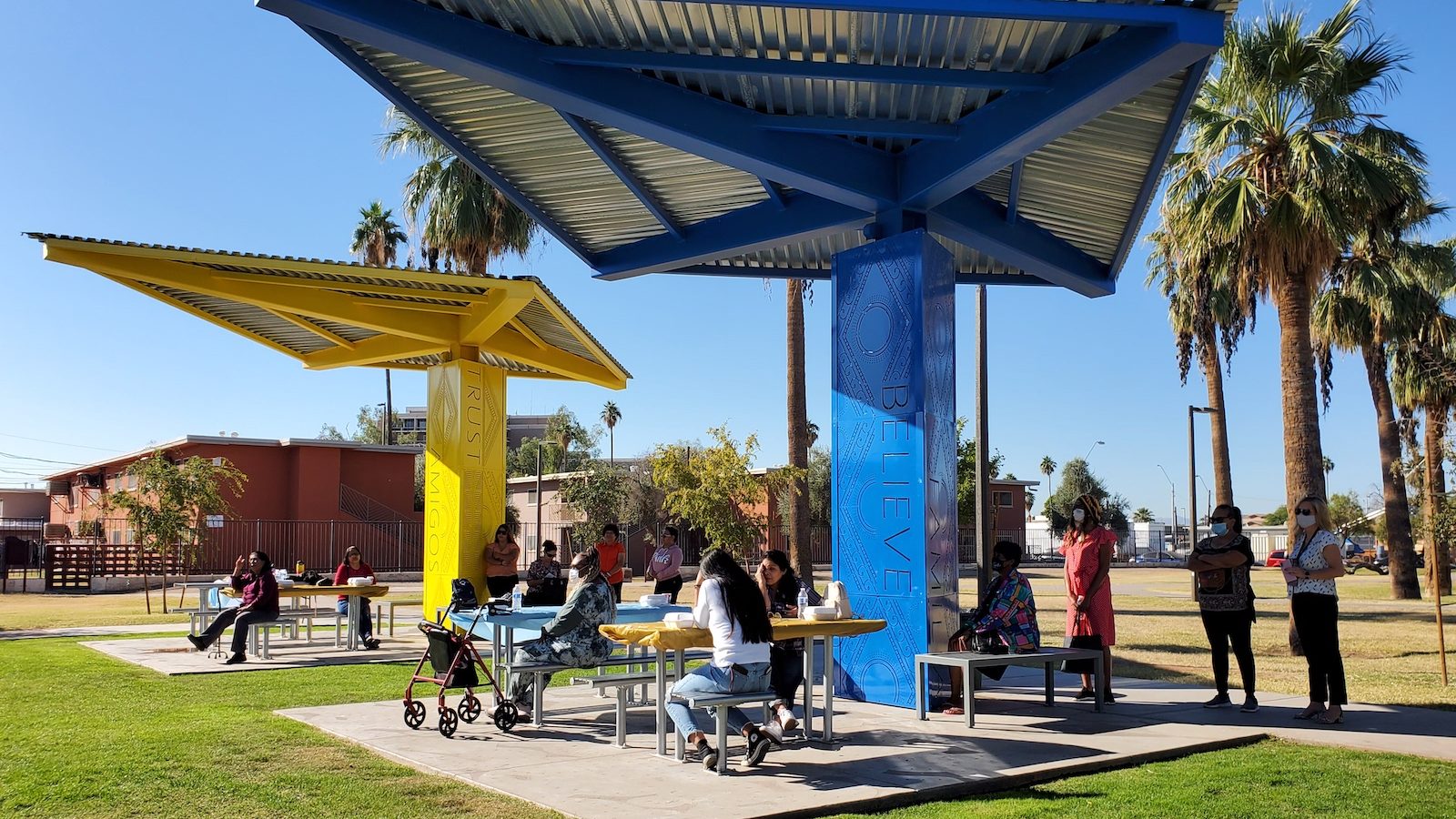Summer is not something to look forward to in Phoenix, Arizona. For many in the hottest city in America, summer is something to survive.
Masavi Perea, 47, knows this well. A former construction worker, he’s now the organizing director of Chispa Arizona, a grassroots group that fights for clean air and water, healthy neighborhoods, and climate action in Latino communities. One of his top priorities is to protect the people in West and South Phoenix who are most likely to suffer, get sick, and even die from extreme heat.
Heat is the number one weather-related killer in the U.S. Last year, there were 338 heat-related deaths in Maricopa County, where Phoenix is located — the most of any county in Arizona. Like many other aspects of climate change, extreme heat highlights inequities, such as who lives in a neighborhood with plenty of shade and green space, and who lives in a neighborhood with more pavement than parks.
In a recent study, Dr. Vivek Shandas, a professor of climate adaptation at Portland State University, analyzed temperatures in 108 different urban areas. He found that areas that underwent redlining — the government’s practice of excluding people of color from federally-insured mortgages — were consistently hotter than other areas. “For communities of color, immigrant communities, and lower income communities living in those historically redlined areas, disinvestment brought lots of concrete, asphalt in the form of highways and freeways, big box stores, industrial facilities,” said Shandas. The areas that were redlined are still the hottest areas within cities — sometimes by 18 degrees Fahrenheit, Shandas found.
And that’s outdoors. Within homes, the difference is often greater. On the same day during a heat wave, a home in a wealthy neighborhood with tree-lined streets and access to air conditioning might be 75 degrees, while a home a few miles away in a low-income neighborhood with lots of pavement and no access to air conditioning might be over 120 degrees. “That’s where we run into some pretty big disparities in terms of health outcomes,” Shandas said. “They end up getting exposed to temperatures that are lethal in terms of human health and wellbeing.”
In Phoenix and in other cities across the country, Perea and countless others have been working to help those who are the most vulnerable keep safe from the rising temperatures. “Phoenix is a bellwether,” said Dr. Melissa Guardaro, a research professor at Arizona State University. “People are still dying, and every heat death is an unnecessary death,” she said. But in many ways, the city is better prepared than others that are experiencing more and more extreme heat due to climate change. While more needs to be done, Phoenix does have protocols in place for when extreme heat hits, and was the first city in the country to fund an office of heat response and mitigation. These steps offer an example for other cities throughout the country that are grappling with deadly heat. “Right now it’s happening in Phoenix, but soon, it’s going to be happening everywhere,” Perea said.
Though it may sound basic, Perea says that the first step towards adapting to the heat is to talk with the people who are most at risk. Too often, Perea has seen government officials and nonprofit organizations come into neighborhoods like West Phoenix to try to tell people what to do without bothering to listen. “When people from the outside come to these communities, they already have the solutions. So people, community members, they don’t buy it. They don’t feel part of it,” he said. When outsiders try to communicate with them “from the top down,” it goes nowhere.
A few years ago, Perea participated in a project that took a different approach. A coalition of community based organizations, including Chispa, researchers from Arizona State University and the Nature Conservancy, and city and county officials came together to create hyper-local heat plans for the three neighborhoods most at risk in the Phoenix metropolitan area.

At first, people were distrustful. They could look around their neighborhoods and see streets and parks that had been neglected for years. “People were not expecting the government to do anything,” Perea said. But he and others with roots in the community were able to bring people into face-to-face meetings with local government officials and researchers. Once the people in power started listening to the community, “that’s when many solutions came up, many solutions from our own people,” he said.
At an individual level, people can keep their homes cooler by taking simple, low-budget steps, like using foam tape to seal gaps around doors, or making larger renovations, like installing insulation. At a community level, neighbors can check in on one another, paying particular attention to the elderly or those who might not have as many social connections. At a city level, governments can reverse decades of disinvestment by adding and maintaining green spaces and tree cover and targeting upgrades, like pavement that reflects the sun’s heat, to certain areas. Finally, at a state and federal level, policymakers can make electricity more affordable and offer assistance programs for people who struggle to pay their utility bills.
In the West Phoenix neighborhood that Perea worked with, some of the solutions people proposed included: adding shaded walkways for common routes (along with water fountains), expanding the warning system that lets residents know extreme heat is imminent, and offering first aid training so they could recognize the signs of heat exhaustion and heat stroke to help each other.
When trying to protect people from extreme heat, “you really need to drill down to the local level in order to do effective interventions,” said Guardaro, who wrote a paper on the process of developing the heat plans in Phoenix. Locals were able to mark the routes children take walking to school and the bus stops that people without cars rely on the most so the group could prioritize where to plant trees or build shade structures. “There are limited funds, and we want to make sure that when we’re making investments, it’s the proper investment in the proper place,” Guardaro said. To do that, local expertise is essential.
Perea says he has seen some improvements as a result of the process. For example, the neighborhood he worked with prioritized renovating a local park. Green spaces help cool neighborhoods and provide a place for people to go when their homes are overheated. The city spent $500,000 to add a new playground (which is shaded), picnic areas with tables and grills (which are also shaded), a walking path, more trees, and a public restroom.
Before, “it was a very depressing park,” Perea said. Now, “that park in the evenings is totally different. You see it’s full of people playing and walking and enjoying their community.”
People need to understand the risks associated with extreme heat and what can be done about them. That’s where Jessica Bueno’s work comes in. Bueno is director of the Urban Heat Leadership Academy, a program run by the Nature Conservancy and the Phoenix Revitalization Corporation, a local nonprofit.

The Urban Heat Leadership Academy is a five-month program that meets roughly twice a month and teaches Phoenix residents about how to address the urban heat island effect. It also connects them with academics researching solutions and local government officials responsible for managing the problem.
“The city comes up with plans all day,” said Bueno. “But if residents aren’t implementing it and holding the city accountable, nothing happens.” The goal of the Urban Heat Leadership Academy is that residents learn how to hold the city accountable, advocate for themselves, and implement their own solutions.
In the long term, Phoenix would be in a much better position to protect residents from the heat “if we could figure out how to give safe, affordable, livable housing to everybody who needed it,” said Guardaro, the ASU researcher. In the short term, cooling centers can provide lifesaving relief. That’s where Rosalyn Gorden and other graduates of the academy chose to focus their efforts.
During the pandemic, a cooling center at the Wesley United Methodist Church, a predominantly Black church in South Phoenix, closed down due to staffing shortages. With a grant from The Nature Conservancy and the Phoenix Revitalization Corporation, the graduates reopened the church cooling center, providing an indoor, air-conditioned space, along with cool drinks and snacks, games and activities for children, and toiletries and other supplies for homeless people. It’s open every day from 9 a.m. to 8 p.m., and it’s the only cooling center in South Phoenix that allows people to bring their pets. The facility is staffed by one full time employee, by nearby nursing students who require community health outreach hours to complete their degree program, and by volunteers from the church and surrounding community.
Gorden grew up in South Phoenix, raised two children there, and remembers serving meals to the homeless with her mother at the church, where her family have long been members. The Urban Heat Leadership Academy “opened the door for me to be able to start getting involved in the community, and to be a part of decision-making,” Gorden said. Reopening the cooling center was “a wonderful opportunity” to do something to help people in her neighborhood, she said.
Last week, the first heat wave of the summer hit the Southwest. In Phoenix on Saturday, temperatures climbed to 114 degrees Fahrenheit, tying the daily record. More extreme heat is coming, but that doesn’t mean that more people have to suffer or die.




